Hardscaping refers to the man made element of your landscape, including walkways, patios, retaining walls, firepits, and driveways. It helps to create an organized look to your property. It contrasts with softscaping, which includes living elements like plants, trees, grass, and flowers to enhance the beauty of your outdoor spaces. Hardscape defines the space and softscape beautifies it. Together these two components make a well-maintained and attractive landscape.
What are the Types of Hardscaping?
Here are 15 types of hardscaping:
- Pavers
- Retaining Walls
- Deck and Patios
- Fencing and Privacy Screens
- Pergolas, Arbors, and Gazebos
- Water features
- Fire Pits and Fireplaces
- Outdoor kitchens
- Driveways and Walkways
- Raised Planters and Garden Beds
- Stepping Stones and Pathways
- Lighting
- Gravel and decorative stones
- Edging and borders
- Retaining planters
Table of Contents
Pavers
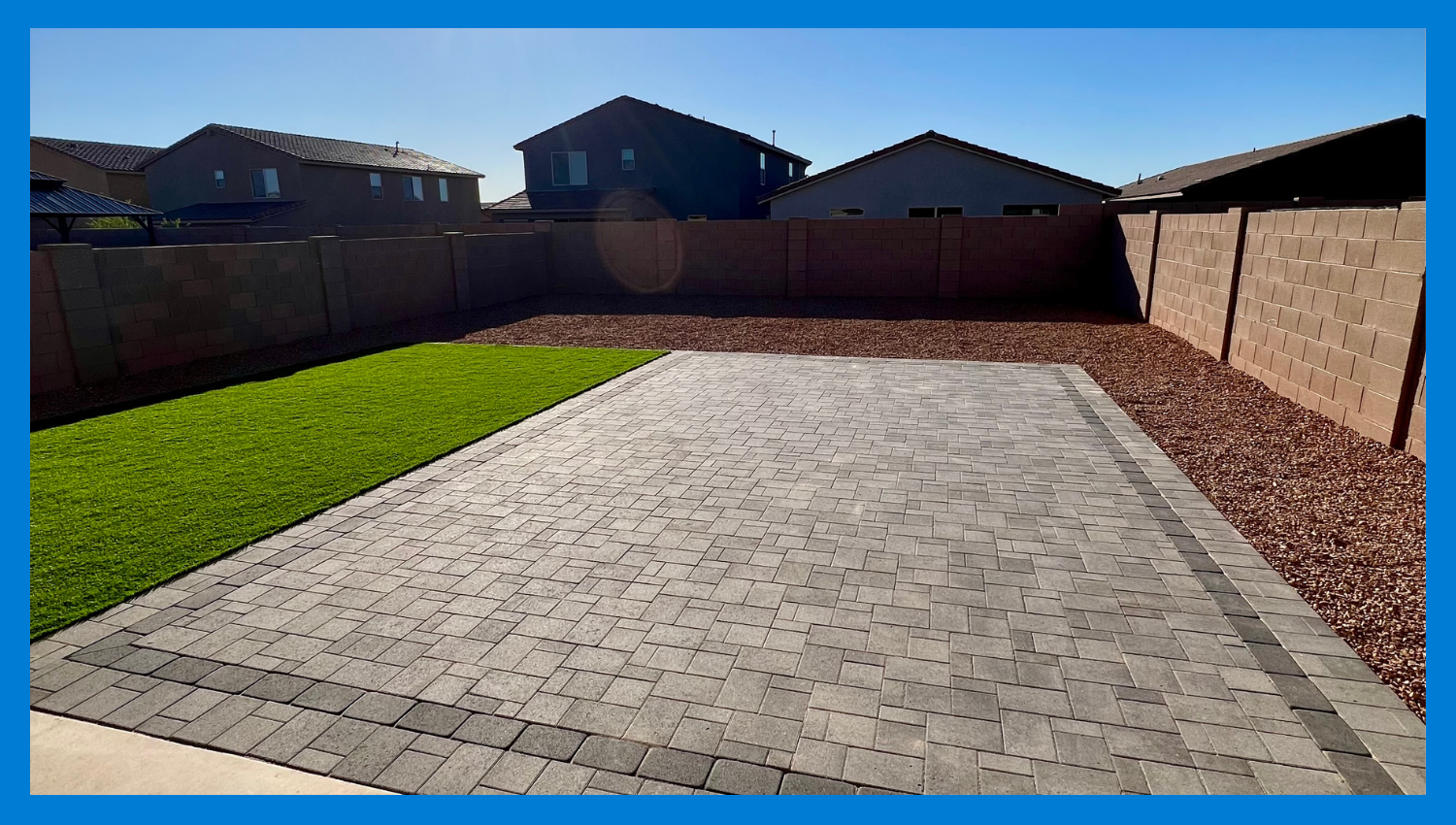
Pavers provide a stable and level surface for entertaining guests or spending your time with family. They create durable and visually appealing pathways with the sizes ranges from 4*8 inches to 36*36 inches, providing versatility and aesthetic appeal to your landscape. Pavers are built on pea gravel and bedded sand, although they can be placed over DE (diatomaceous earth), soil, or grass. Pavers have a good lifespan of 20–50 years, depending on the material you use. Concrete pavers absorb less than 1% water, making them the best choice to save water bills and maintenance cost. Install pavers in your outside spaces to create a balanced landscape.
Retaining Walls
Retaining walls are load-bearing walls that can serve functional and aesthetic purposes in your outdoor space. These walls provide structural integrity while blending with the environment. They are made of concrete blocks, natural stone, timber, brick, or gabions with a lifespan of 50–100 years. Retaining walls can support loads of 2,000-3,000 pounds per linear foot which support garden beds, patios, and driveways effectively. Retaining walls can be customized to match the overall design of your outdoor space.
Decks and Patios
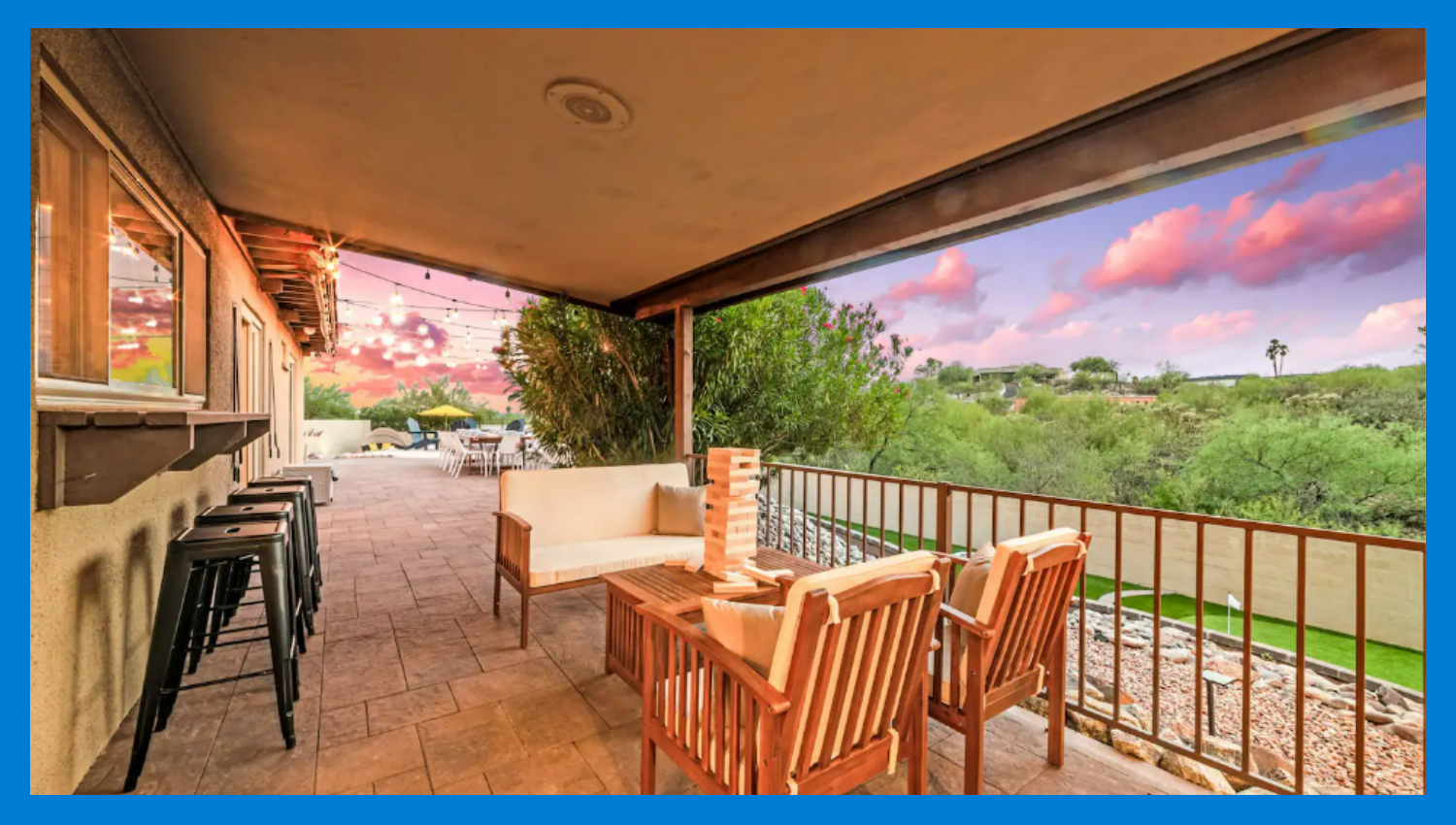
Decks and patios are a great addition to your backyard and serve to partition the area into two distinct regions. Decks are made from pressure-treated wood, composite material or PVC, while patios are made of concrete, pavers, natural Stone, or gravel. They enhance the beauty and aesthetic appeal of your landscape, with an average size Deck of 300-400 square feet and patios 150-300 square feet at ground level. Decks and patios extend the life of your landscape by 10–15 years and 25–30 years respectively. They are cost-effective and can be customized according to your landscape design.
Fencing and Privacy Screens
Fencing is the quickest way to privacy, which offers security and aesthetic appeal to your outdoor space. The material used in fencing includes traditional wood, vinyl, and metal to modern composite and bamboo options, each catering to your specific needs. Fences installed in your landscape improves property value and outdoor visibility as they have a good lifespan of 10–15 years with regular maintenance. Privacy screens are 4 to 6 feet high, while fences are 6 to 8 feet tall, improving air quality and adding greenery to your outside spaces. Fencing and privacy screens are made up of 95% recycled material, which ensures durability and security for your landscape.
Pergolas, Arbors, and Gazebos
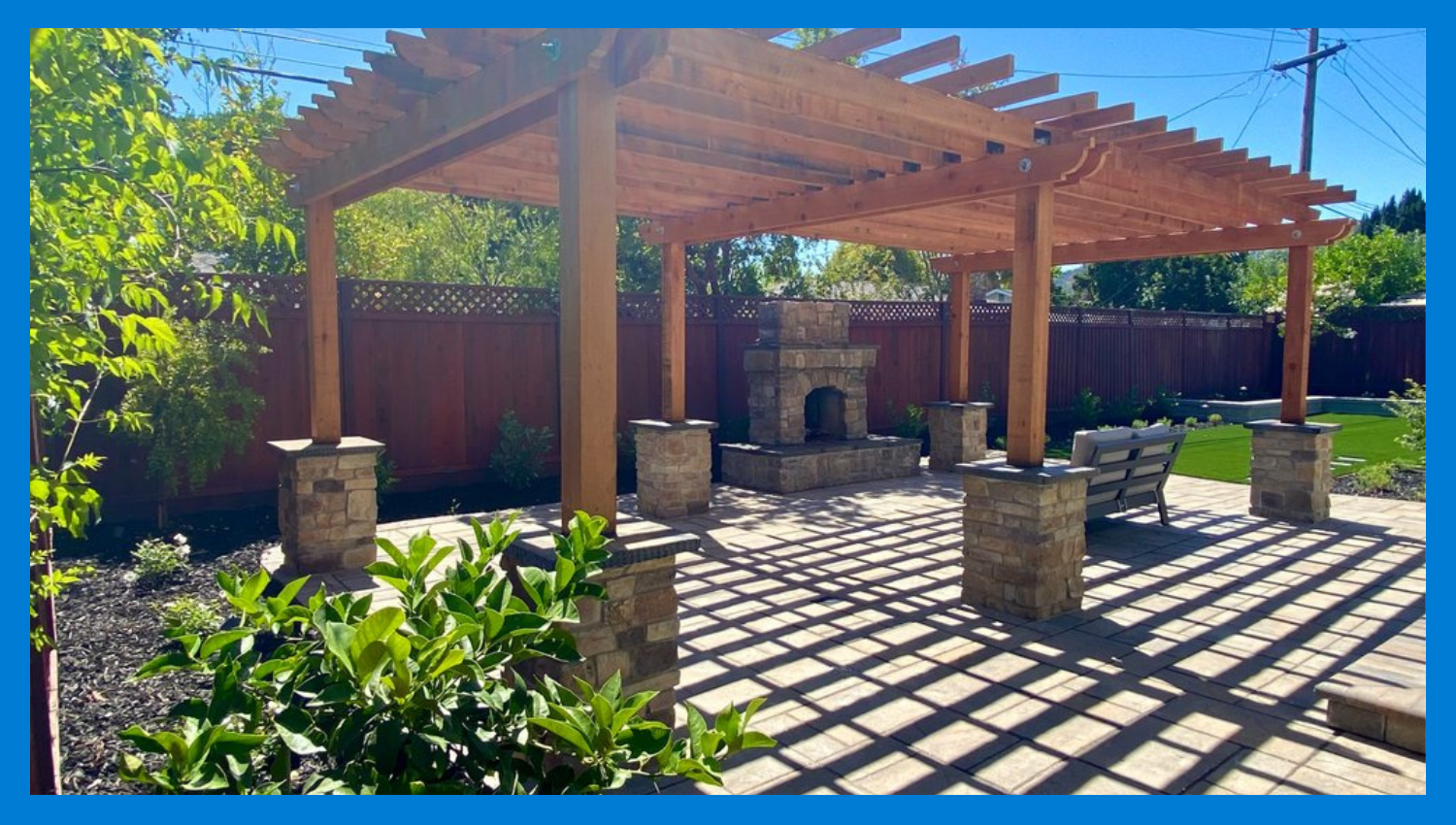
Pergolas, Arbors, and Gazebos are a great addition to your garden that enhance aesthetic appeal and functionality by providing partial shades to your landscape. Pergolas are made up of wood, vinyl, aluminium, or fire glass with dimensions ranging from 10 to 20 feet in length and 8 to 12 feet in width. You can customize these outdoor structures to fit with your landscape design. The interest for installing outdoor structures is rising at a 5.1% annual pace, with pergolas accounting for 45%, gazebos 35%, and arbors 20%. Arbors add a touch of charm to your landscape, while pergolas and gazebos complement the landscape and provide shade.
Water Features
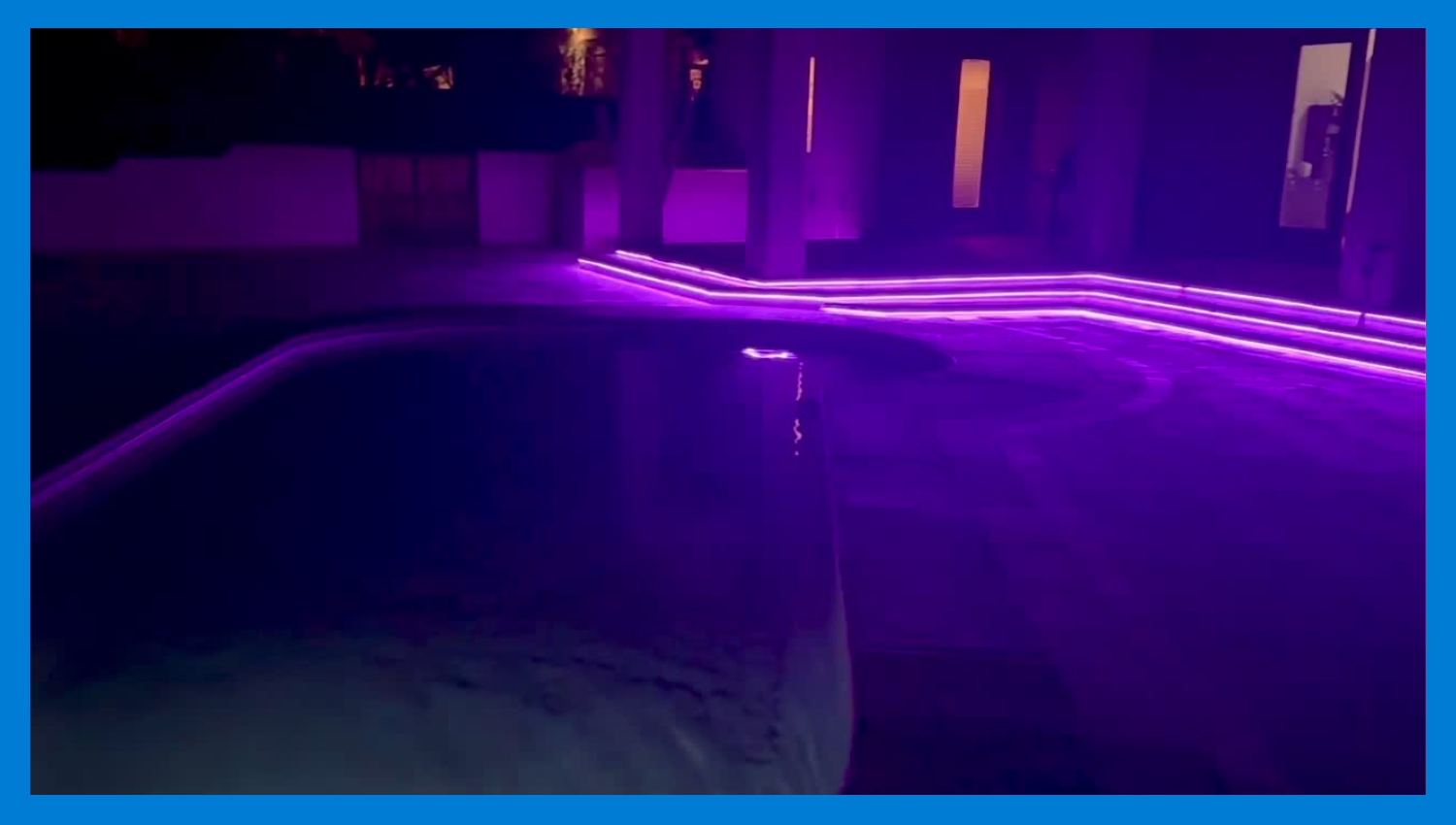
Adding a water feature to your outdoor space is a great way to improve its aesthetics while also adding a relaxing touch. A well-designed water feature can produce a relaxing sound, attract animals, and create a peaceful environment. Fountains range in height from 2 to 10 feet and cost between $1,000 to $20,000 depends on the size and your preferences. Water features refresh outdoor spaces and are made up of stone and metal which ensures durability. They create a tranquil and calming atmosphere in your outdoor space and reduce 90% water wastage. You can customize your water features by using LED lighting, aquatic plants, and high quality material to make your landscape look more aesthetic.
Fire Pits and Fireplaces
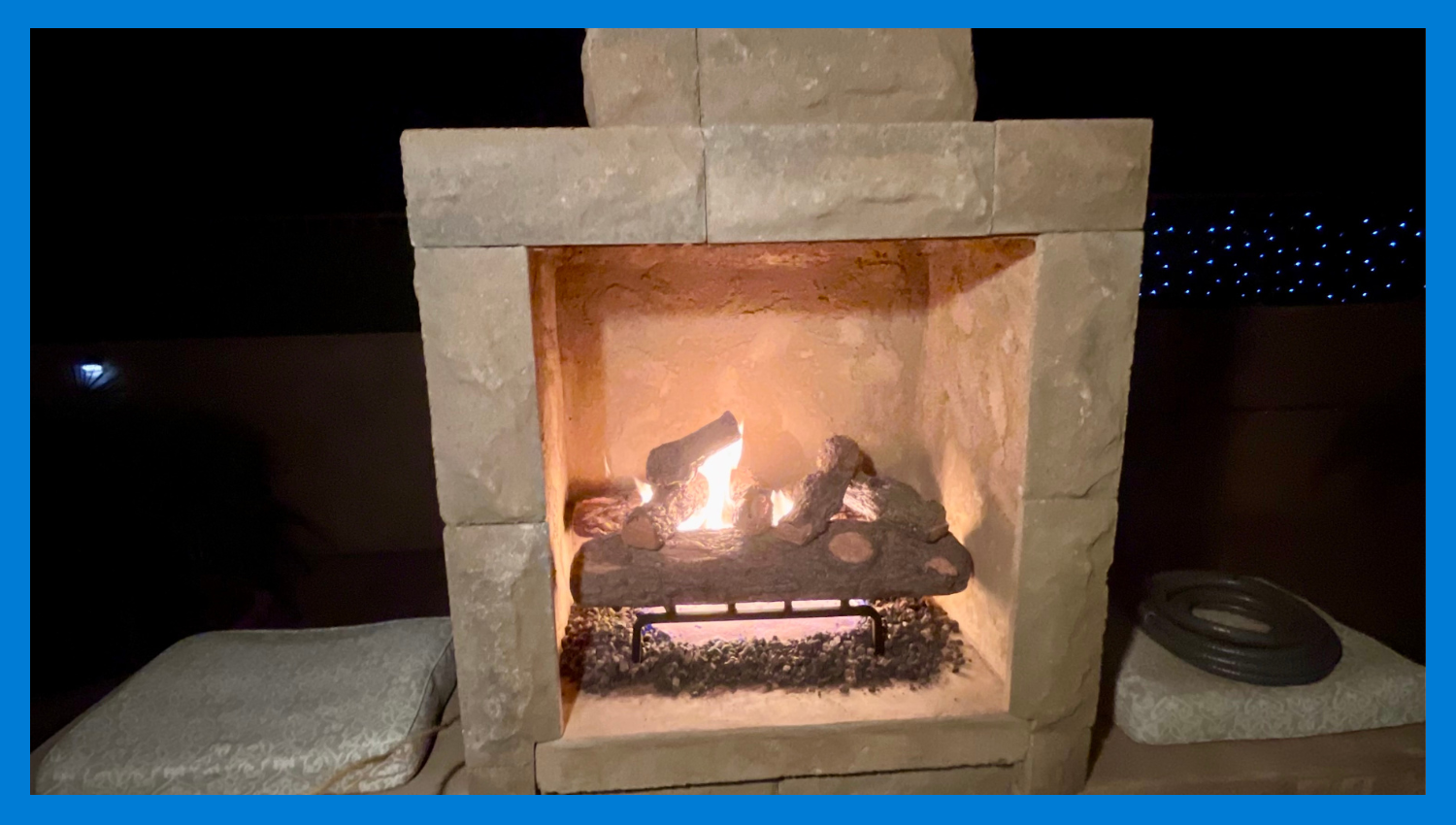
A built-in outdoor fireplace or fire pit is a useful hardscape that makes your outdoor area more liveable and comfortable. Fire Pits are available in wood-burning, propane, and natural gas ranges in size from 24 to 60 inches, making them a popular choice. They enhance the warmth and appeal of your outdoor spaces, producing heat ranging between 30,000 and 75,000 BTU. Outdoor fire pits are made from stone, brick, or concrete material and cost $1,500 to $25,000. Fire Pits and fireplaces increase your property value by 10% and complement other elements on your landscape.
Outdoor Kitchen
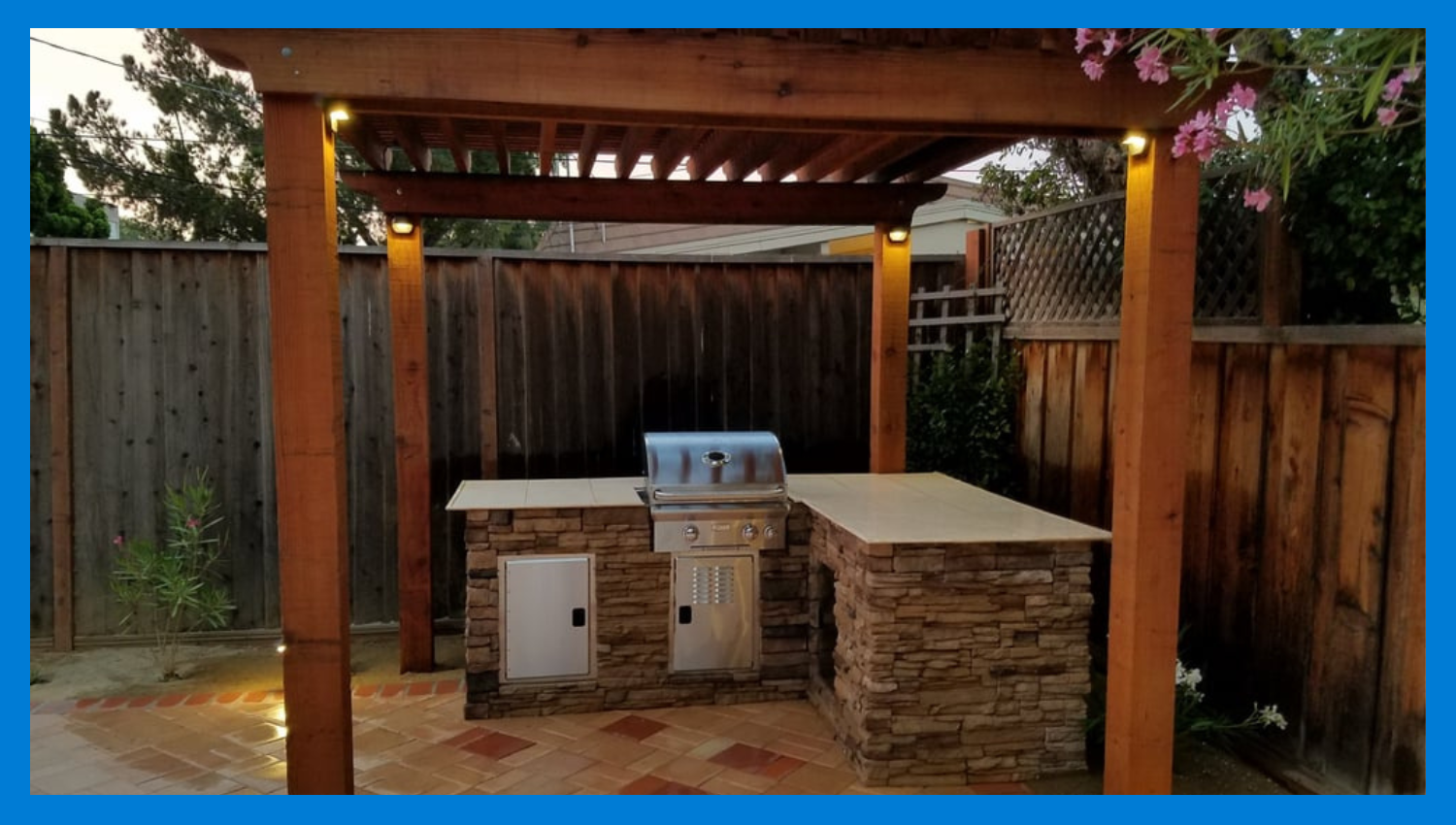
Outdoor kitchen allows you to enjoy meals outside while still having all the comforts of a typical kitchen. Outdoor kitchen consists of L-shaped, U-shaped, and straight line configuration which cater to any space requirements. They are designed to maximize functionality and aesthetics of your landscape and last for 15–25 years.. Granite countertops (used in 60-70% of kitchens) and stainless steel cabinets (70%) are popular materials due to their durability and weather resistance. Outdoor kitchens require maintenance to ensure longevity and keep it functional.
Driveways and Walkways
Driveways are made up of concrete, stone, brick, and asphalt that are robust and load-bearing. They are designed to ensure durability and functionality in your outdoor space by increasing the value of the property by 15%. Concrete is the most often used material, accounting for 50-60% of roads and pathways, followed by asphalt 25-30%. Driveways and pathways with decorative items like stamped concrete and soft lights create a more stunning look to your landscape. Driveways normally range in width from 8 to 10 feet for single-car to 18–20 feet for two-car configurations, with lengths averaging 30–50 feet. Walkways are typically 3–6 feet wide. They are designed to provide smooth and safe passage and give a more organized look to your landscape.
Raised Planters and Garden Beds
Raised planters are garden beds popular among novice and seasoned gardeners as they help maximize space in small and urban gardens. Wood is usually utilized in 40-50% of raised beds, while metal accounts for 20-30%. Stone/brick is used in 10-15% of high-end installations. These beds enhance the aesthetics of your garden by creating visually defined sections, consisting of large beds which are 6–8 feet in width and 10–12 feet in length. Raised planters also used to grow vegetables, herbs and decorative flowers. They are cost-effective and lightweight, so you can easily move and handle them. Raised garden beds are an efficient use of space and help you to maximize the available growing area.
Stepping Stones and Pathways
Pathways protect the garden and easily blend with the surrounding landscape. The materials used are concrete 40-50% followed by natural stones 20-30% providing a more rustic appearance. They are installed to create a defined working area into your landscape and are typically 2–4 feet wide, with lengths ranging from 10 to 50 feet or more, depending on the size of the garden or landscape. Stepping stones are arranged in a unique pattern which enhance accessibility and last for 20–30 years. You can add them into your landscape to reduce run-off, making a more secured environment. Stepping stones and pathways provide an effective way to enhance the beauty and value of your landscape.
Lighting
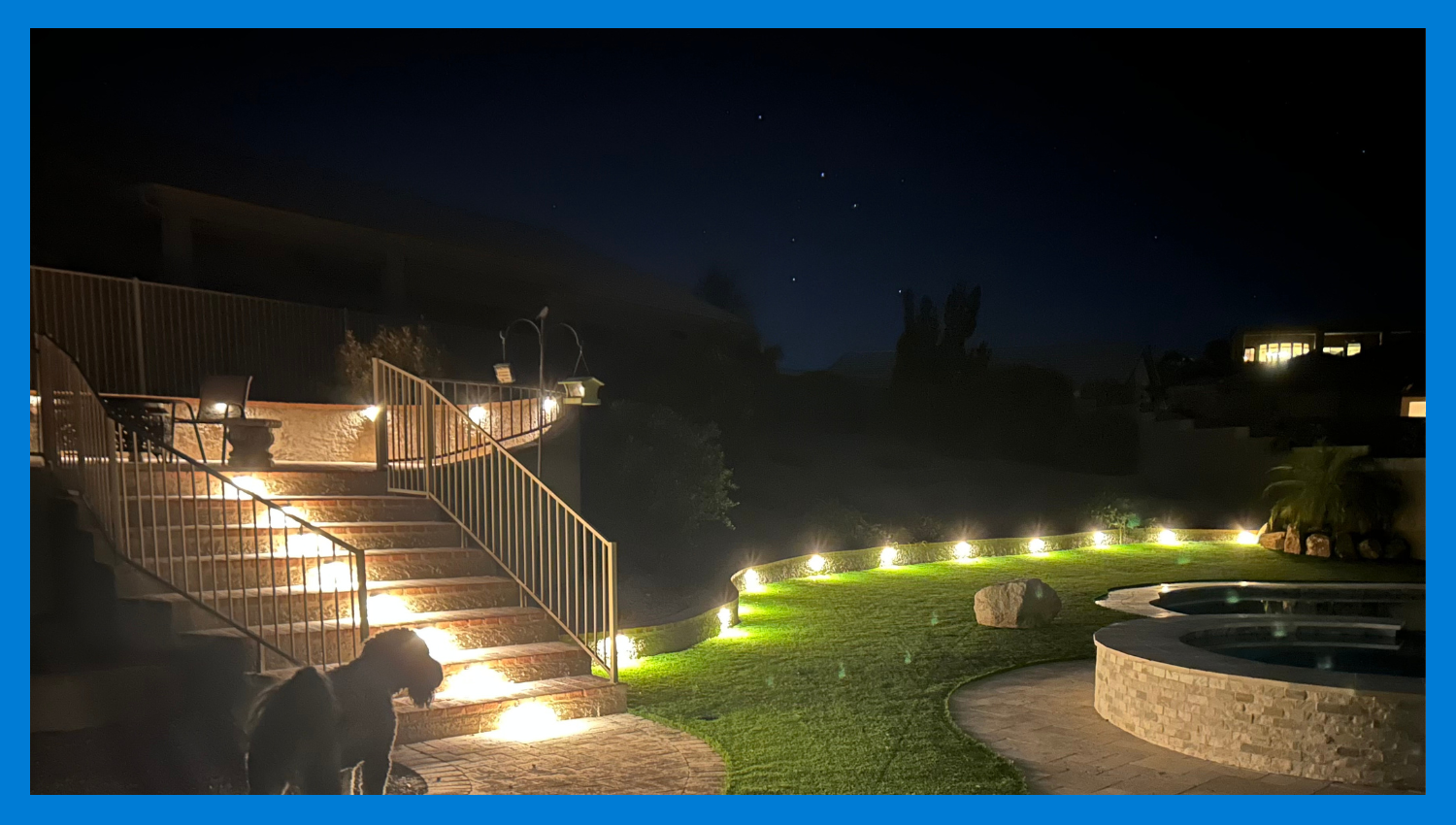
Lighting in hardscaping brings your yard to life. Modern hardscaping includes energy-efficient LED technology as it consumes up to 75% less energy than incandescent bulbs, which make them a sustainable choice. You can transform your landscape into a stunning visual experience by adding lighting to your hardscape as it covers 15-30% of your property area and addresses environmental problems. Hardscape lighting balances utility and design, extending functionality to 33-50% for 24 hours. These lights provide safety to your landscape for nighttime navigation.
Gravel and Decorative Stone
Gravel and decorative stones are an affordable and low-maintenance option to create a seating area in your outdoor space. They create a rustic natural look by incorporating a cubic yard of gravel, as it weighs roughly 1.2 tons and covers about 100 square feet at a 2-inch depth. Gravel and decorative stones enhance the aesthetic appeal of pathways and garden beds by using crushed brick or limestone material. Gravel and decorative stones act as a permeable surface, reducing water run-off and making your yard more attractive.
Edging and Borders
Edging and borders provide a boost to your landscape by creating clean and definite lines between lawns, gardens, driveways, and walkways. Edging and borders involves constructing concrete edging to manage the layout and appearance of your outdoor space, as well as to guarantee that grass and other vegetation do not grow beyond their allotted regions. You can use bricks, natural stones, plastic, metal, wood, and concrete as they are durable and provide design appeal, with heights typically ranging from 2 to 6 inches and widths between 1 and 4 inches. They also come in different shapes and sizes, so you can create a unique design that complements your landscape. Edging and borders enhance the curb appeal and your property value by 5% to 10%, supporting long-term durability and blend perfectly with your landscape.
Retaining Planters
Retaining planters provide support and stability to your landscape by holding back soil on slopes. They add functionality and beauty by providing an integrated drainage system, which is important for preventing water accumulation in your outside space. Retaining planters enhance the visual appeal and use metal, concrete, brick, stone, and wood material. These planters facilitate the creation of decorative yet functional hardscape and hold large amounts of soil and create rich garden beds. It is best to install these planters and promote healthier plant growth in your garden.

